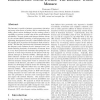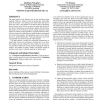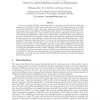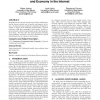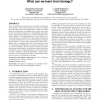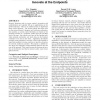CCR
2007
13 years 11 months ago
2007
While the Internet is hardly “broken”, it has proved unable to integrate new ideas, new architectures, and provide paths for future integration of data, voice, rich media and ...
IJNSEC
2008
13 years 11 months ago
2008
The Internet is crucial to business, government, education and many other facets of society and its continuing scalability places serious challenges on the routing system's c...
CCR
2006
13 years 11 months ago
2006
The rapid growth of the Internet over the last decade has been startling. However, efforts to track its growth have often fallen afoul of bad data -- for instance, how much traffi...
CN
2008
13 years 11 months ago
2008
Although there are two standard transport protocols, TCP and UDP, offering services in the Internet, the majority of the traffic over the Internet is TCP-based. TCP-based applicat...
COMCOM
2010
13 years 11 months ago
2010
Due to its versatility, flexibility and fast development, the modern Internet is far from being well understood in its entirety. A good way to learn more about how the Internet fu...
CCR
2008
13 years 11 months ago
2008
Modeling Internet growth is important both for understanding the current network and to predict and improve its future. To date, Internet models have typically attempted to explai...
CCR
2010
13 years 11 months ago
2010
There is significant research interest recently to understand the evolution of the current Internet, as well as to design clean-slate Future Internet architectures. Clearly, even ...
CCR
2010
13 years 11 months ago
2010
On September 23, 2009, CAIDA hosted a virtual Workshop on Internet Economics [3] to bring together network technology and policy researchers, commercial Internet facilities and se...
ICDIM
2007
IEEE
13 years 11 months ago
2007
IEEE
Web Services have experienced great interest during the last years as they were expected to act as enablers of seamless application-to-application integration both within company ...
SIGCOMM
2010
ACM
13 years 11 months ago
2010
ACM
Security functions such as access control, encryption and authentication are typically left up to applications on the modern Internet. There is no unified system to implement thes...

